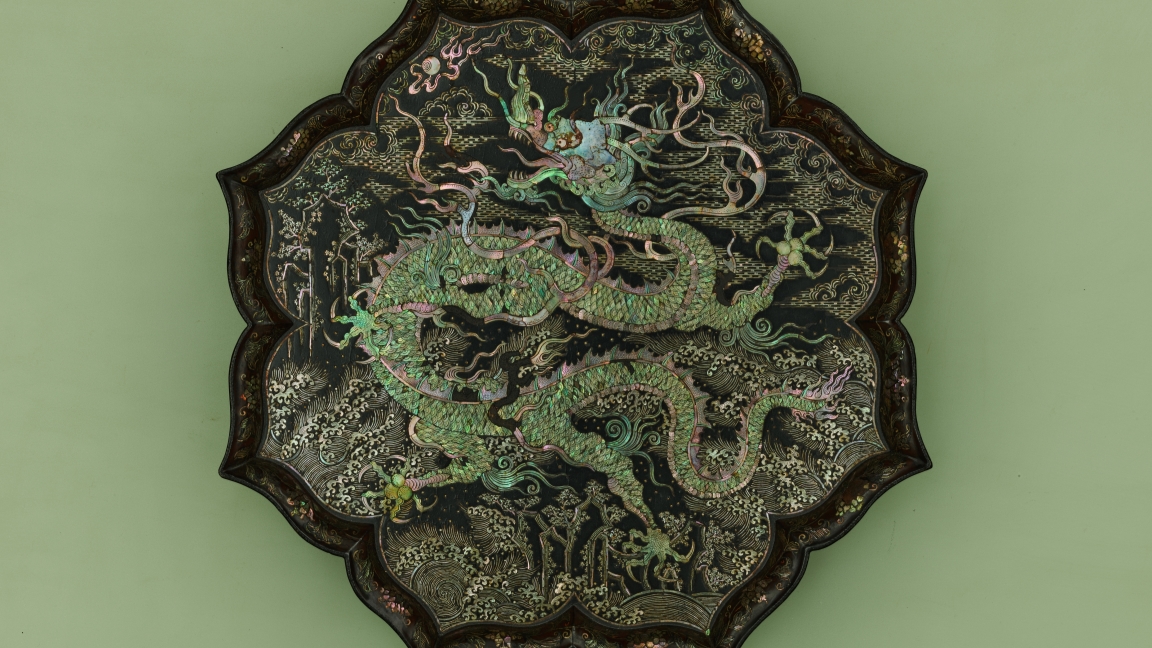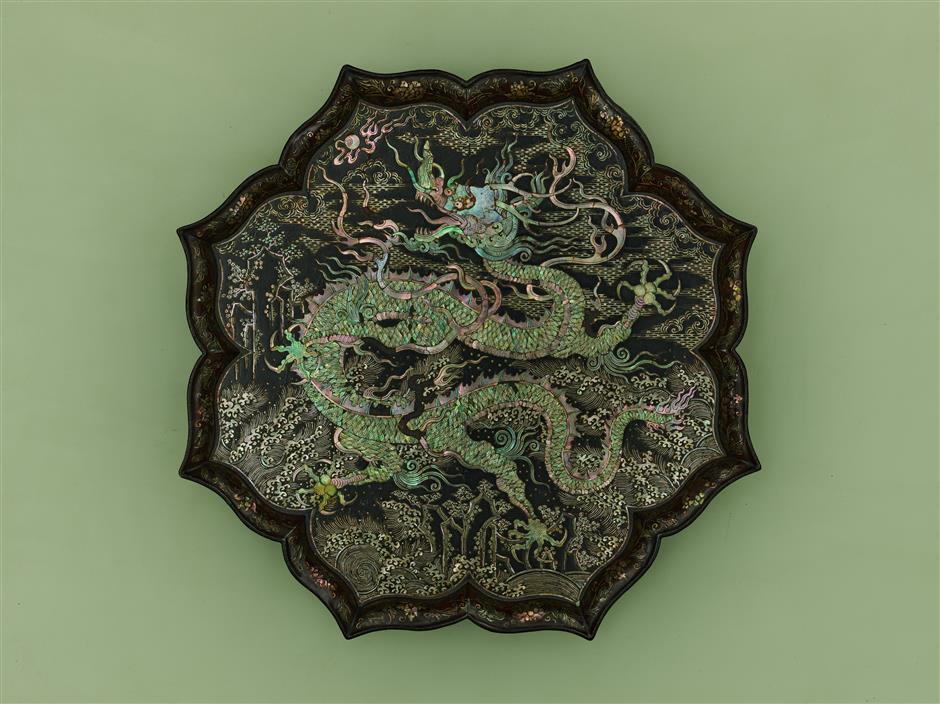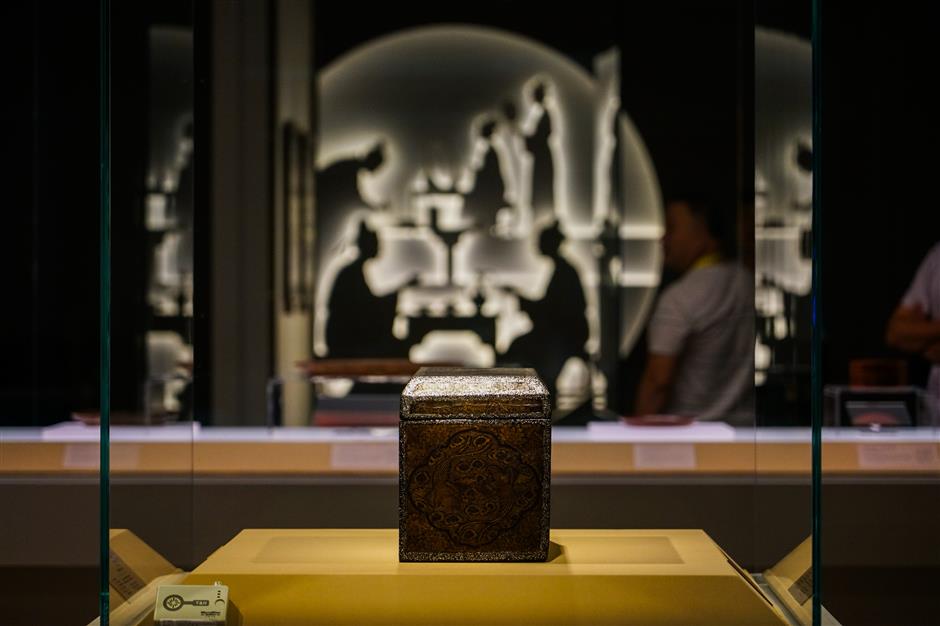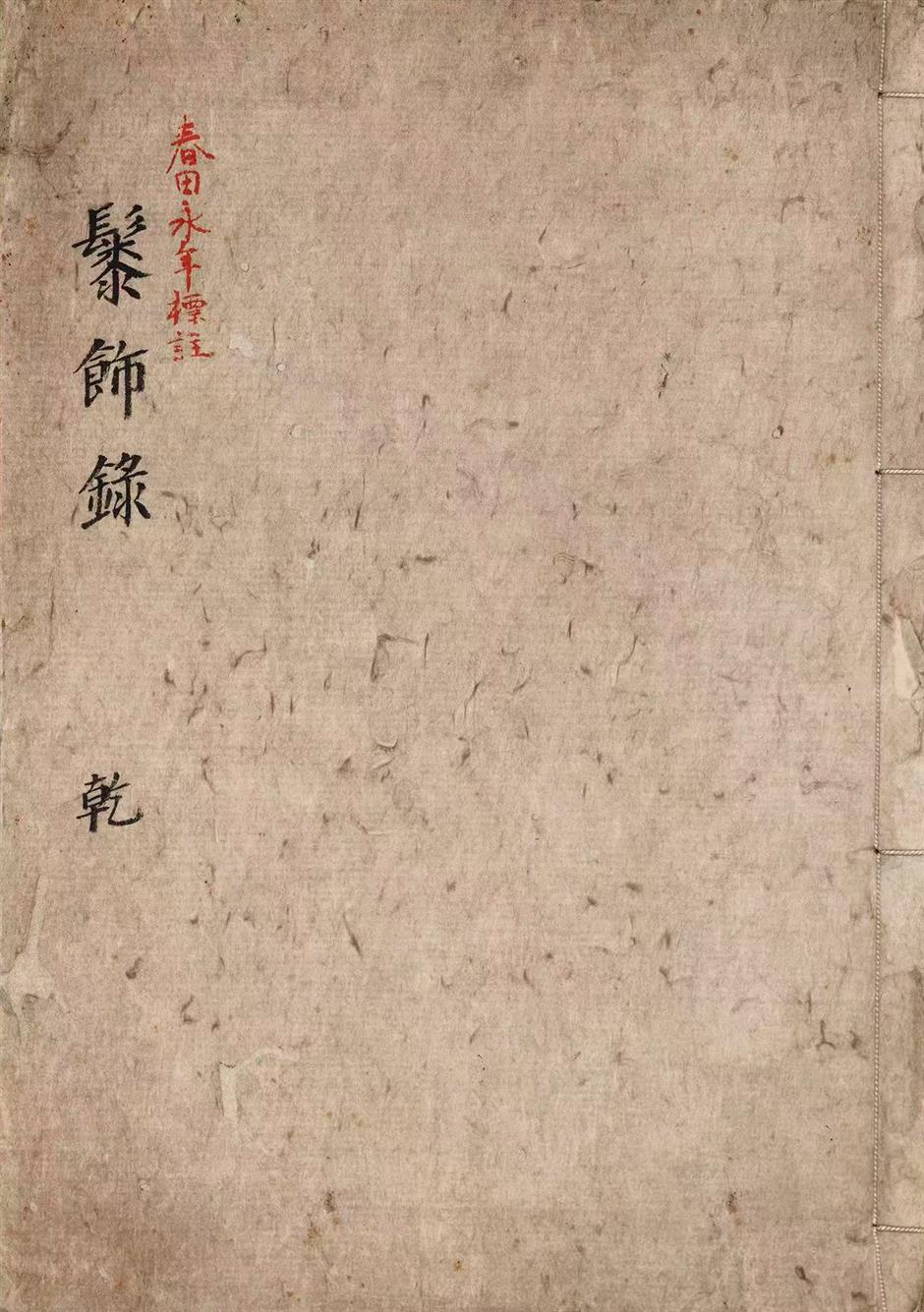
Centuries-Old Chinese Lacquerware Returns Home in a Shanghai Exhibition

Yuan dynasty, 14th century
Diameter 33.0 cm, height 2.3 cm
Tokyo National Museum
In a rare homecoming that bridges art and history, more than 100 pieces of Chinese lacquerware that crossed the sea to Japan hundreds of years ago are back on Chinese soil. On September 25, the Shanghai Museum opened "When Ruby Vies with Emerald: Exquisite Lacquer of the Song, Yuan and Ming Dynasties," a sweeping exhibition mounted in partnership with the Tokyo National Museum.
The show brings together 127 works, including 112 from Japanese collections – many of them designated "Important Cultural Properties" in Japan – and 15 excavated from archaeological sites in China. Over half date to the Song (960-1279) and Yuan (1271-1368) dynasties, a period celebrated for technical brilliance and visual sophistication in lacquer art. For many of the Japanese-held treasures, this is their first public appearance in China.
"This is not just an art exhibition," said Sun Feng, a senior researcher at the Shanghai Museum. "It is a reunion of cultural bloodlines."
Chinese lacquerware is prized for its glossy surfaces and intricate decoration. In Japan, it was cherished as an exotic luxury by temples and imperial households.

Among the standouts is a black-lacquered, mother-of-pearl inlaid box from the Yuan dynasty, on loan from Japan's Idemitsu Museum of Arts and displayed only for the exhibition's first two weeks. The large, petal-shaped box depicts imperial pageantry and is considered one of the finest surviving examples of its kind. "No matter the conditions, we had to borrow it," Sun said. "It shows our ancestors' artistry at its highest level."
Equally striking is an eight-lobed dish from the Tokyo National Museum, its black lacquer surface shimmering with a five-clawed dragon formed from iridescent shell inlay, the creature's green scales and red fins flashing under the lights.

Edo period (the original work published in 1625, Ming dynasty)
Length 17.0 cm, width 24.5 cm
Tokyo National Museum
Not every highlight is a glittering object. Tokyo National Museum also brings to Shanghai "The Record of Lacquer Decoration" (Xiushi Lu 髹飾錄), a 17th-century technical manual long lost in China. The museum holds two manuscript versions, both on view alongside a digital facsimile. The book, whose annotated edition marks its 400th anniversary this year, remains essential to scholars who still draw on its terminology to identify and classify works.
Curators arranged the exhibition as a journey "from plain to splendid." Six thematic sections guide visitors from the quiet refinement of monochrome lacquer to the layered, jewel-like brilliance of carved red, carved black, and the gold-inlaid technique known as qiangjin. Works include a carved-red rectangular box alive with phoenixes and peonies, a black-lacquer round dish illustrating children at play under a full moon, and a gilt-line sutra case decorated with a unique scene of four monks among clouds.
The exhibition runs through November 23 at the Shanghai Museum's People's Square location, with a mid-run rotation that will introduce additional pieces. For Chinese audiences, Sun hopes it rekindles pride in a medium often overshadowed by the country's celebrated ceramics and bronzes.
"Our porcelain achieved global fame," he said. "But lacquerware's artistic accomplishments are no less extraordinary. This exhibition lets people see that with their own eyes."
If you go
Date: Through to November 23; Tuesday to Sunday; 9am-5pm(last entry at 4pm); Closed on Mondays (except national holidays)
Venue: Shanghai Museum
Address: 201 People Avenue
Admission: Free
